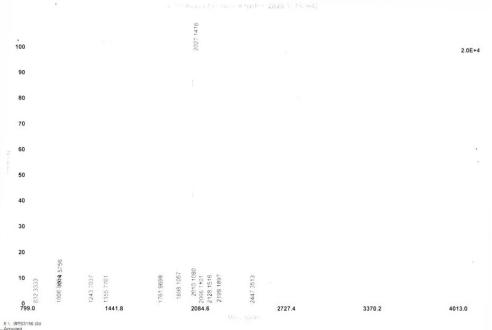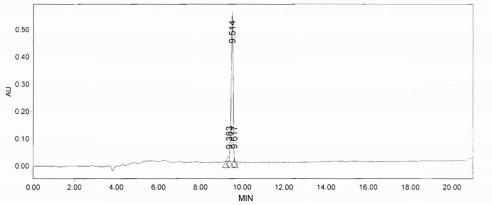OVA Conjugated Prolactin (PRL) 

LTH; Luteotropic Hormone
Overview
Properties
- Product No.CPA846Ra21
- Organism SpeciesRattus norvegicus (Rat) Same name, Different species.
-
Applications
Immunogen; SDS-PAGE; WB.
If bio-activity of the protein is needed, please check active protein.
Research use only - DownloadInstruction Manual
- CategoryEndocrinologyReproductive scienceGenetic scienceHormone metabolism
- SourceProtein Conjugation
- Original Molecular Massn/a
- Buffer FormulationPBS, pH7.4.
- Traits Freeze-dried powder, Purity > 90%
- Isoelectric Pointn/a
Share your citation
Upload your experimental result
Review
Leave a message
Loading...
Sign into your account
Share a new citation as an author
Upload your experimental result
Review
Please attach serial No. on instruction manual


Contact us
Please fill in the blank.
Name*
Organization
Address
E-mail address*
Telephone
Inquiry*
Verification code*

Formula

Usage
Reconstitute in PBS (pH7.4) to a concentration of 0.1-1.0 mg/mL. Do not vortex.
Storage
Avoid repeated freeze/thaw cycles. Store at 2-8°C for one month. Aliquot and store at -80°C for 12 months.
Stability
The thermal stability is described by the loss rate. The loss rate was determined by accelerated thermal degradation test, that is, incubate the protein at 37°C for 48h, and no obvious degradation and precipitation were observed. The loss rate is less than 5% within the expiration date under appropriate storage condition.
Increment services
Citations
- In Vivo Evidence for Epidermal Growth Factor Receptor (EGFR)-mediated Release of Prolactin from the Pituitary GlandJcb: 39297
- TLR9 expression is associated with prognosis in patients with glioblastoma multiformeScienceDirect: S0967586811003572
- Determination of prolactin hormone in serum and urine using an electrochemical immunosensor based on poly(pyrrolepropionic acid)/carbon nanotubes hybrid modified electrodesSciencedirect:S0925400514000720
- Effect of extended photoperiod during winter on growth and onset of puberty in Murrah buffalo heifersPubmed:27051212
- Effect of thermal stress on physiological, hormonal and haematological parameters in Tharparkar and Karan Fries calvespublication:306322503
- Differentiation of human umbilical cord Wharton’s jelly-derived mesenchymal stem cells into endometrial cellspubmed:29096715
- The role of mesenchymal stem cells in chemotherapy-induced gonadotoxicityPubmed:30021657
- Impact of Triclosan on Female Reproduction through Reducing Thyroid Hormones to Suppress Hypothalamic Kisspeptin Neurons in MicePubmed:29403355
- The antipsychotics sulpiride induces fatty liver in rats via phosphorylation of insulin receptor substrate-1 at Serine 307-mediated adipose tissue insulin resistancePubmed:29551354
- The prolactin‐release inhibitor paeoniflorin suppresses proliferation and induces apoptosis in prolactinoma cells via the mitochondria‐dependent pathwayPubmed:29388711
- Metformin inhibits growth and prolactin secretion of pituitary prolactinoma cells and xenograftsPubmed: 30334324
- Hormonal and metabolic indicators before and after farrowing in sows affected with postpartum dysgalactia syndromePubmed: 30404636
- Expression of prolactin receptors in the duodenum, kidneys and skeletal system during physiological and sulpiride-induced hyperprolactinaemiaPubmed: 30143940
- Morphological and Biochemical Characteristics of Prostate Hyperplasia during Sulpiride TreatmentPubmed: 32152847
- Effect of heat stress during the early and late dry period on mammary gland development of Holstein dairy cattlePubmed: 32684470
- Pathophysiological Changes in Female Rats with Estrous Cycle Disorder Induced by Long-Term Heat StressPubmed: 32685488
- Prolactin affects the disappearance of ALV-J viremia in vivo and inhibits viral infection34391195
- Effects of a Nanoencapsulated Moringa Leaf Ethanolic Extract on the Physiology, Metabolism and Reproductive Performance of Rabbit Does during Summer34439574
- Yogurt Enriched with Inulin Ameliorated Reproductive Functions and Regulated Gut Microbiota in Dehydroepiandrosterone-Induced Polycystic Ovary Syndrome MicePubmed:35057459

















